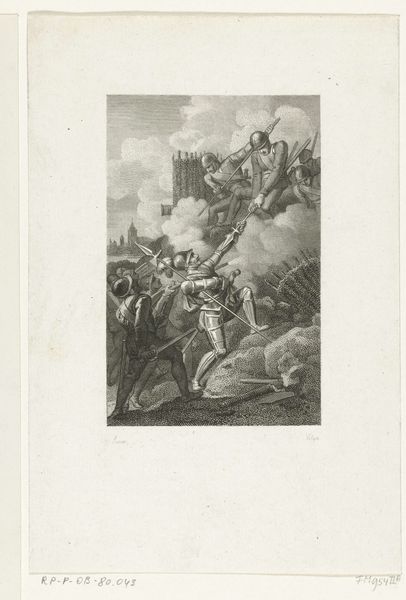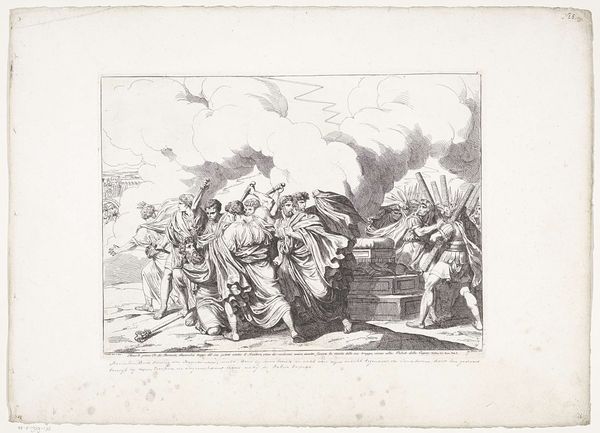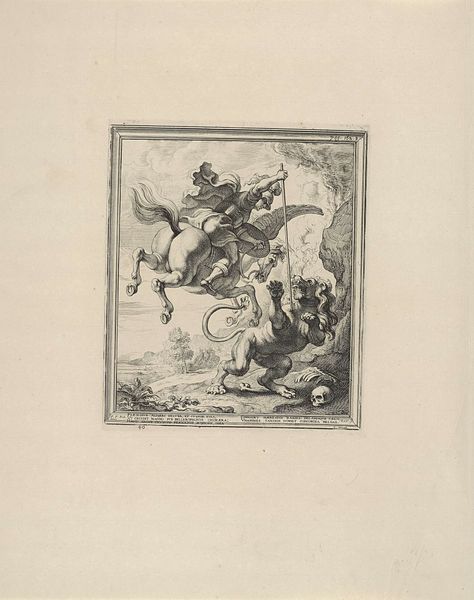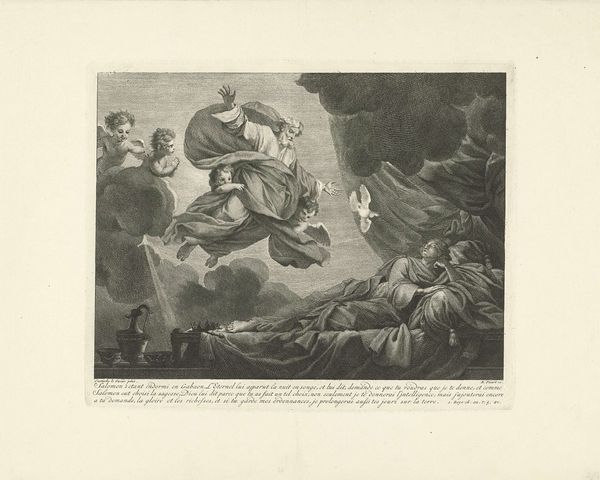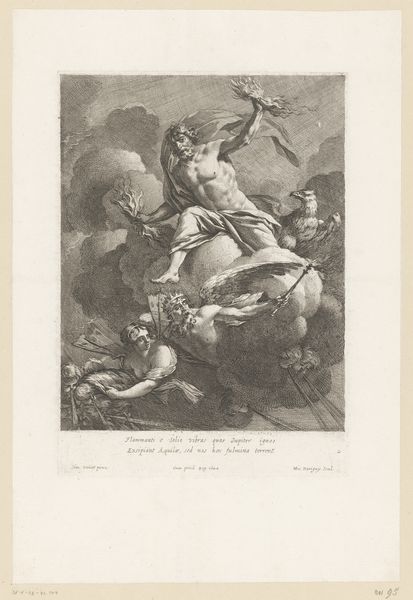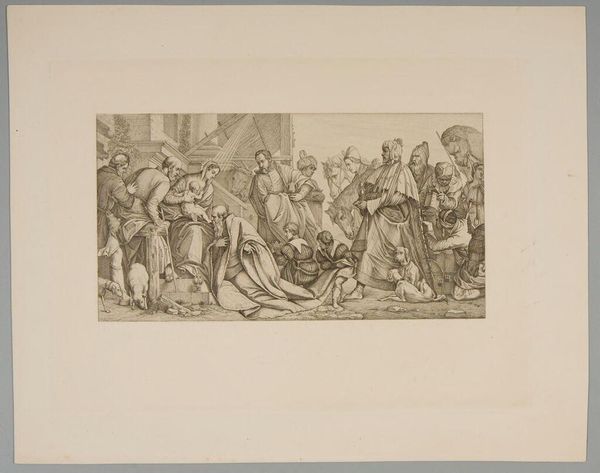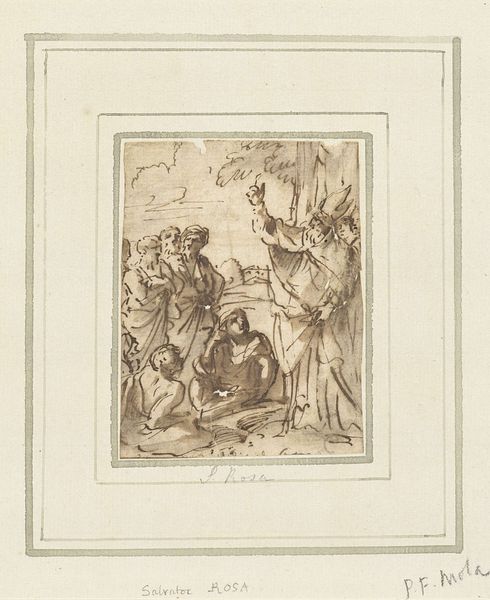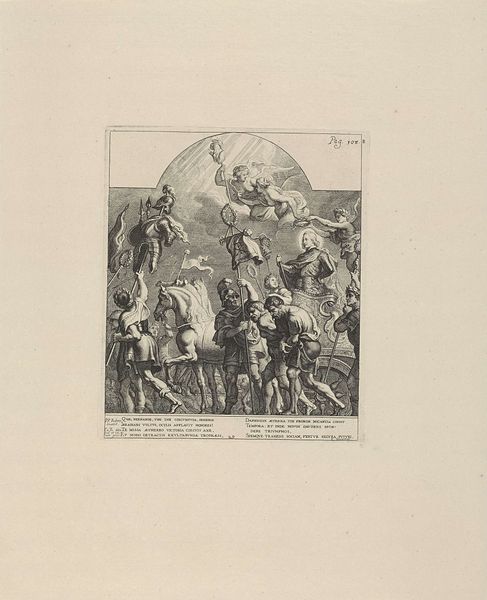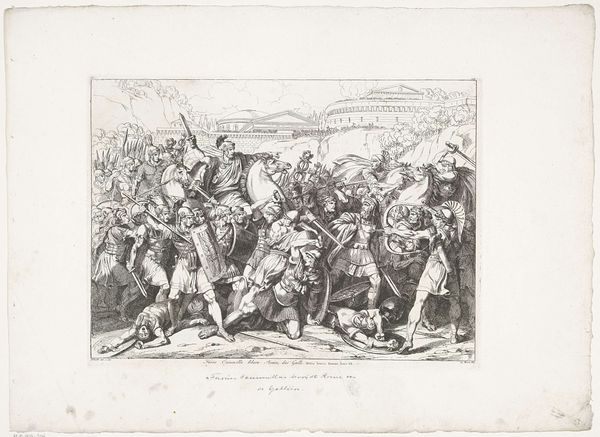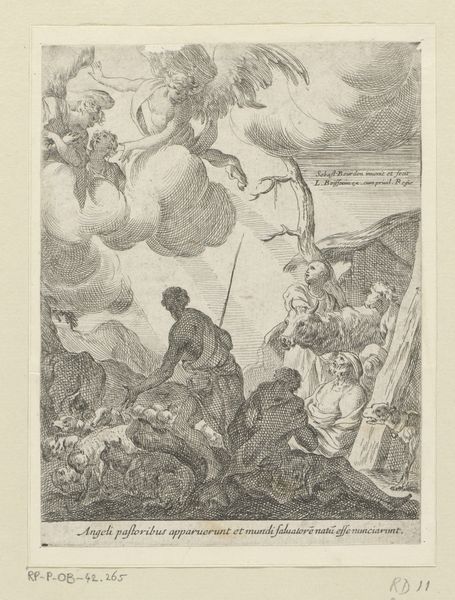
Dimensions: height 290 mm, width 205 mm
Copyright: Rijks Museum: Open Domain
Curator: Let’s consider this intriguing print entitled ‘Scène uit Tasso's "La Gerusalemme liberata,"’dating roughly between 1735 and 1800, attributed to Giovanni Cattini. My initial reaction revolves around the composition, this almost frenetic energy balanced by a rather subdued tonal palette. What's your immediate take on this piece? Editor: It reads to me as chaotic. The materials here, we see the engraver's hand rendering forms primarily through lines of varying thicknesses, and the sheer amount of it creates that energy. I imagine this being a rather labor-intensive piece considering the level of detail. Curator: Absolutely. We see, perhaps, echoes of the Baroque style—the dramatic flourish and the sense of overwhelming motion. It seems this print references Torquato Tasso’s epic poem, “Jerusalem Delivered," framing it through the lens of conflict and possibly deliverance. How do you see its potential place in art history relative to production value and societal status of the labor behind the print? Editor: Right, engraving was an artisanal skill. A print such as this, disseminating a popular story like Tasso's epic, speaks to a broader audience beyond the elite. It democratizes access. I think it's fair to suggest we examine who was in access to the book it was placed inside, so the cultural status of this scene remains limited only to people who had literacy skills, not solely by economic status. What's intriguing here is not necessarily just the battle itself, but that very intimate, possibly gendered interaction happening on the left-hand side. Who is she, in respect to those figures, and is she there as a signifier for salvation? Curator: Exactly! What role does that figure play? I believe your material perspective gives us more space to challenge any notions of divine intervention. The characters involved are still vulnerable despite its heavy reliance on classical narrative. The production and dissemination are so vital in framing reception here, but without some notion to accessibility by literacy, any conversation for mass distribution can fall apart if this piece remains exclusive within the pages of Tasso's publication. Editor: The way it interplays classical history, craft production, and a dash of gendered interactions presents a curious case study for considering our understanding of both high and low culture back then. The role of craft becomes an active voice in retelling this epic poem. Curator: This investigation encourages us to dissect presumed roles of power and influence in artistic dialogues, where narrative and creation intersect so compellingly. Editor: Agreed; seeing art from the ground up definitely alters the perspective quite substantially.
Comments
No comments
Be the first to comment and join the conversation on the ultimate creative platform.

